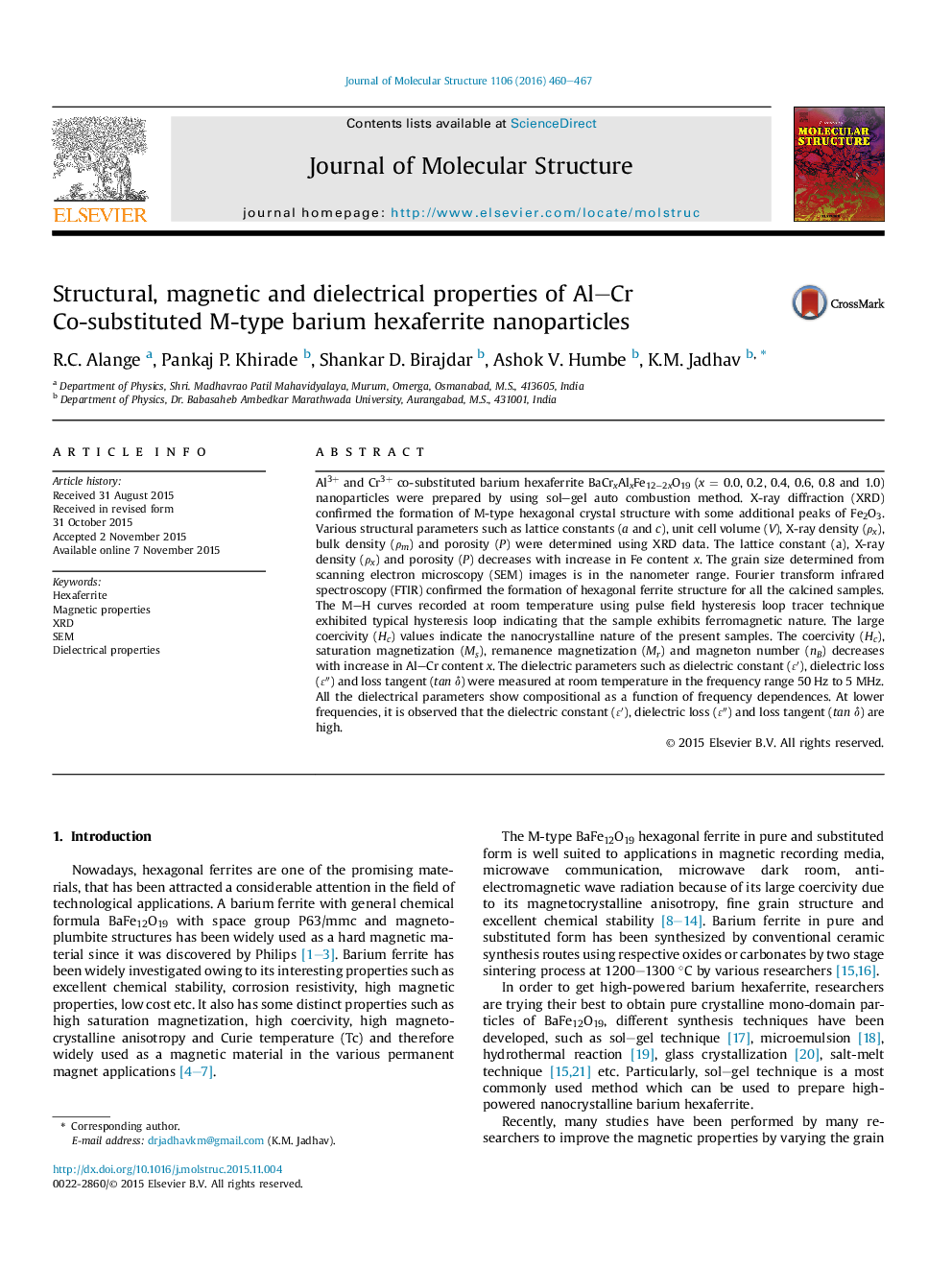| Article ID | Journal | Published Year | Pages | File Type |
|---|---|---|---|---|
| 1401577 | Journal of Molecular Structure | 2016 | 8 Pages |
•Al3+ and Cr3+ co-substituted barium hexaferrite synthesized by sol–gel auto combustion.•Effect of Al–Cr co-substitution on structural, magnetic and dielectric properties was studied.•The XRD patterns revealed the hexagonal structure.•Ms, Hc and Mr were strongly affected by the Al3+ and Cr3+ co-substitution.•The ɛ′, ɛ″ and tan δ shows frequency and compositional dependence.
Al3+ and Cr3+ co-substituted barium hexaferrite BaCrxAlxFe12−2xO19 (x = 0.0, 0.2, 0.4, 0.6, 0.8 and 1.0) nanoparticles were prepared by using sol–gel auto combustion method. X-ray diffraction (XRD) confirmed the formation of M-type hexagonal crystal structure with some additional peaks of Fe2O3. Various structural parameters such as lattice constants (a and c), unit cell volume (V), X-ray density (ρx), bulk density (ρm) and porosity (P) were determined using XRD data. The lattice constant (a), X-ray density (ρx) and porosity (P) decreases with increase in Fe content x. The grain size determined from scanning electron microscopy (SEM) images is in the nanometer range. Fourier transform infrared spectroscopy (FTIR) confirmed the formation of hexagonal ferrite structure for all the calcined samples. The M–H curves recorded at room temperature using pulse field hysteresis loop tracer technique exhibited typical hysteresis loop indicating that the sample exhibits ferromagnetic nature. The large coercivity (Hc) values indicate the nanocrystalline nature of the present samples. The coercivity (Hc), saturation magnetization (Ms), remanence magnetization (Mr) and magneton number (nB) decreases with increase in Al–Cr content x. The dielectric parameters such as dielectric constant (ɛ′), dielectric loss (ɛ″) and loss tangent (tan δ) were measured at room temperature in the frequency range 50 Hz to 5 MHz. All the dielectrical parameters show compositional as a function of frequency dependences. At lower frequencies, it is observed that the dielectric constant (ɛ′), dielectric loss (ɛ″) and loss tangent (tan δ) are high.
